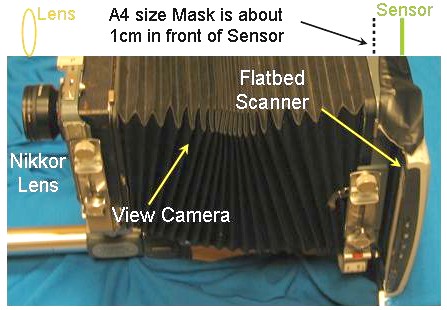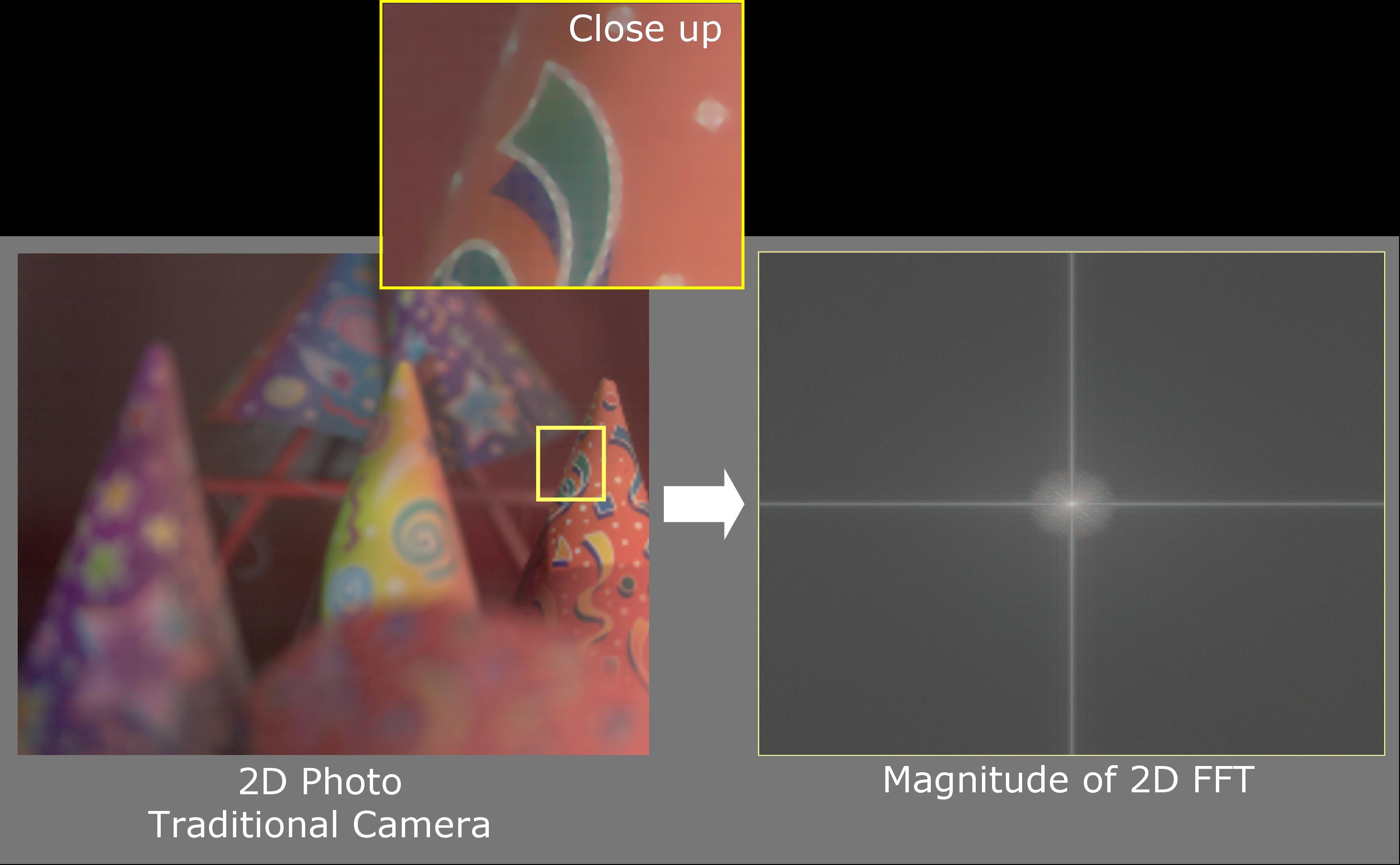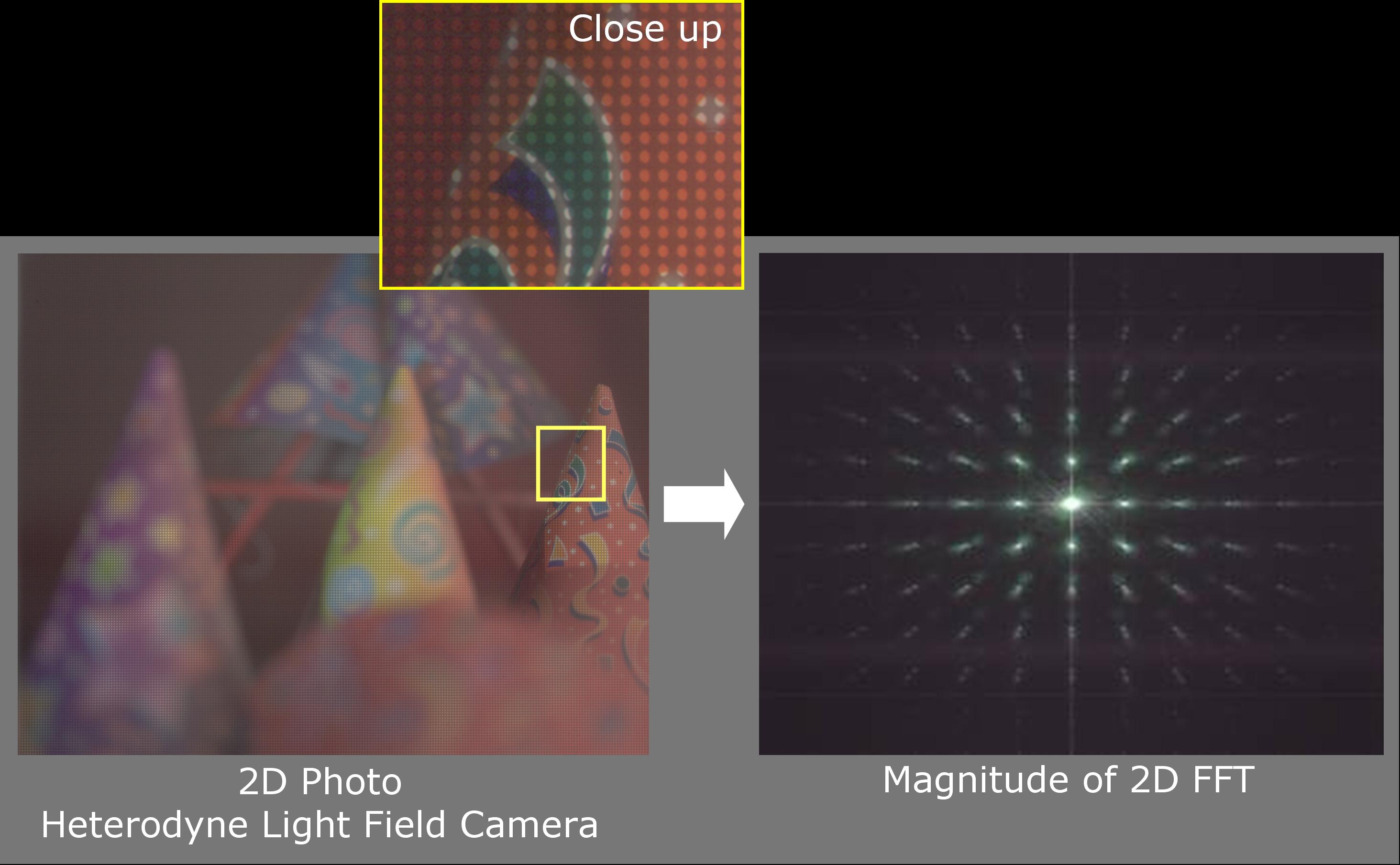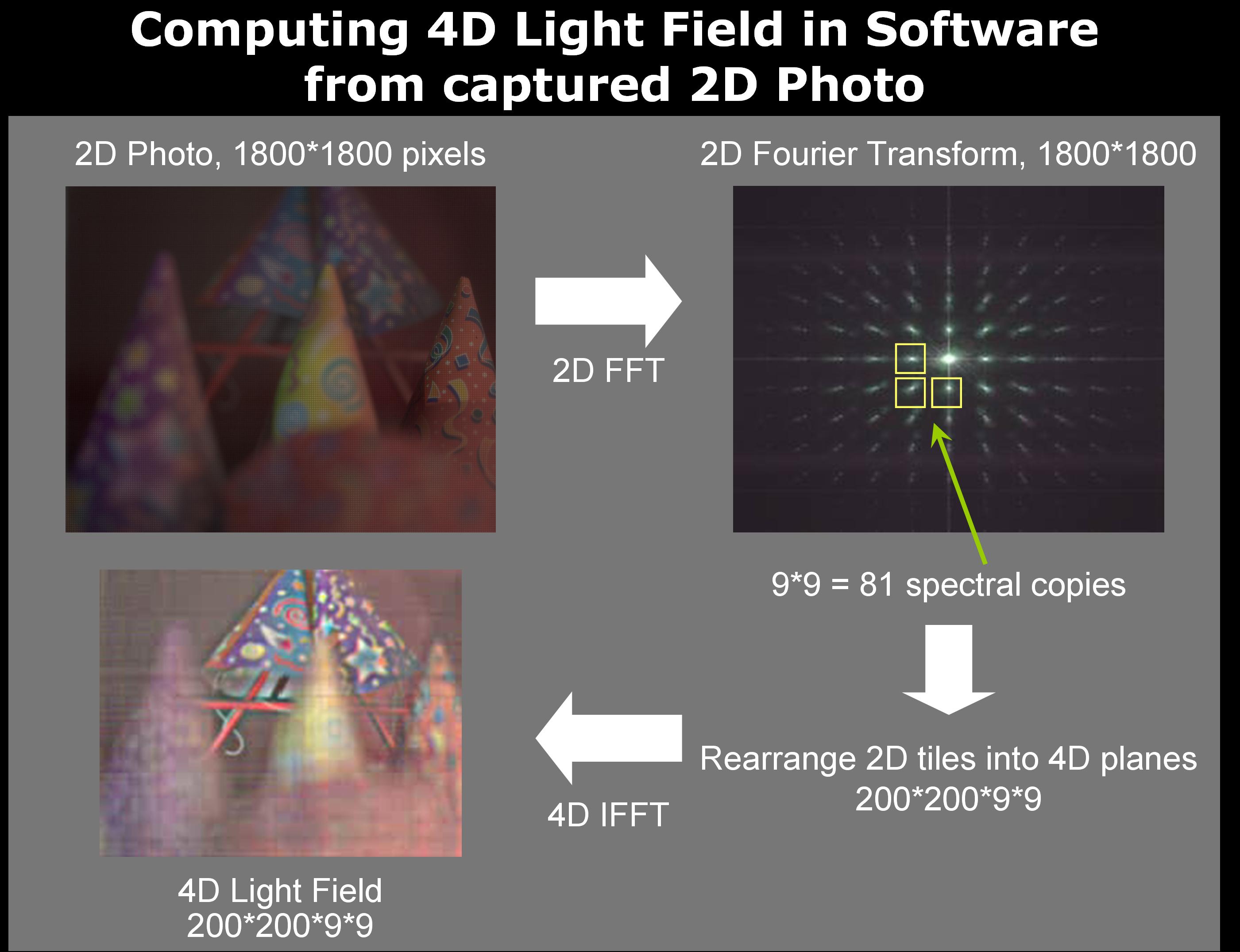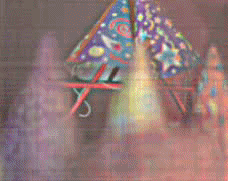Dappled Photography: Mask Enhanced Cameras for
Heterodyned Light Fields and
Coded Aperture Refocusing
Ashok
Veeraraghavan, Ramesh Raskar, Amit
Agrawal, Ankit
Mohan and Jack
TumblinACM SIGGRAPH 2007
Low res pdf, Matlab Code and Images, High res pdf
Slides, SIGGRAPH Talk Slides
Updates:
Frequently Asked Questions
Movie of Siggraph presentation (Quicktime, 24MB, 25 minutes)
Errata: Equations 11 and 12 have error in published version which has been corrected in online pdfs. Detailed derivation of equations 10,11 and 12 (not in paper)
Analysis of Aliasing and the Band-limited Lightfield Assumption
History of Integral and Lightfield Imaging (External Link)
Datasets and How to create a LF camera in 35 seconds and a $5 mask.
Coded Aperture Refocussing
Can we capture additional information about a scene by inserting a patterned mask inside a conventional camera?
We use a patterned attenuating mask to encode the light field entering the camera. Depending on where we put the mask, we can effect desired frequency domain modulation of the light field. If we put the mask near the lens aperture, we can achieve full resolution digital refocussing. If we put the mask near the sensor, we can recover a 4D light field without any additional lenslet array. See Slides for more details.
  |
|
AbstractWe
describe reversible modulation
of 4D light field by inserting a
patterned planarmask in the optical path of a lens based camera. We
can reconstruct the 4D light field from a 2D camera image without
any additional lenses as required by previous light field cameras.
The patterned mask attenuates light rays inside the camera instead
of bending them, and the attenuation recoverably encodes the ray
on the 2D sensor. Our mask-equipped camera focuses just as a
traditional camera might to capture conventional 2D photos at full
sensor resolution, but the raw pixel values also hold a modulated
4D light field. The light field can be recovered by rearranging the
tiles of the 2D Fourier transform of sensor values into 4D planes,
and computing the inverse Fourier transform.
We also show how a broad-band mask placed at the lens enables us to compute refocusing at full sensor resolution for images of layered Lambertian scenes. This partial encoding of 4D ray-space data enables editing of image contents by depth to remove or suppress unwanted occluders, yet does not require computational recovery of the complete 4D light field. |
Heterodyne Light Field Camera
Full resolution Digital Refocussing using the Encoded Blur Camera (Click on photos to download full resolution versions)
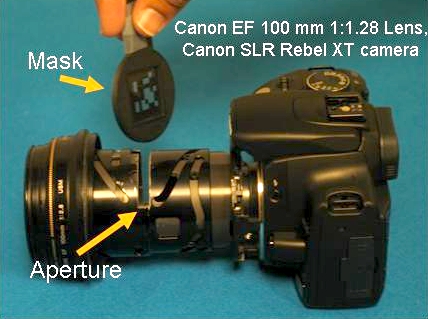 |
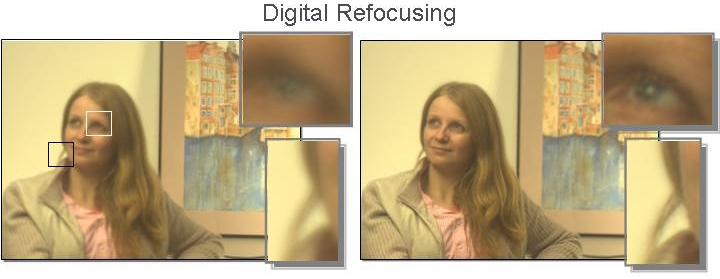 Input Photo (Full Resolution) Digitally Refocussed Photo (Full Resolution) Encoded Blur Camera, i.e. with mask in the aperture, can high spatial images frequencies in the defocus blur. Notice the glint in the eye. In the misfocused photo, on the left, the bright spot appears blurred with the bokeh of the chosen aperture (shown in the inset). In the deblurred result, on the right, the details on the eye are correctly recovered. [Hires Photos] |
Differences in photos taken with our Encoded Blur Camera as compared to a traditional camera
Note that when the lens is out of focus, the blur is disc shaped in a traditional camera as shown in the middle figure. With our camera, due to the mask in the aperture, the shape of the defocus blur, or Bokeh, changes according to the mask pattern. Effectively, high spatial frequencies are preserved using the mask, which are otherwise lost. Post-processing in software can recover the sharp image of the scene.
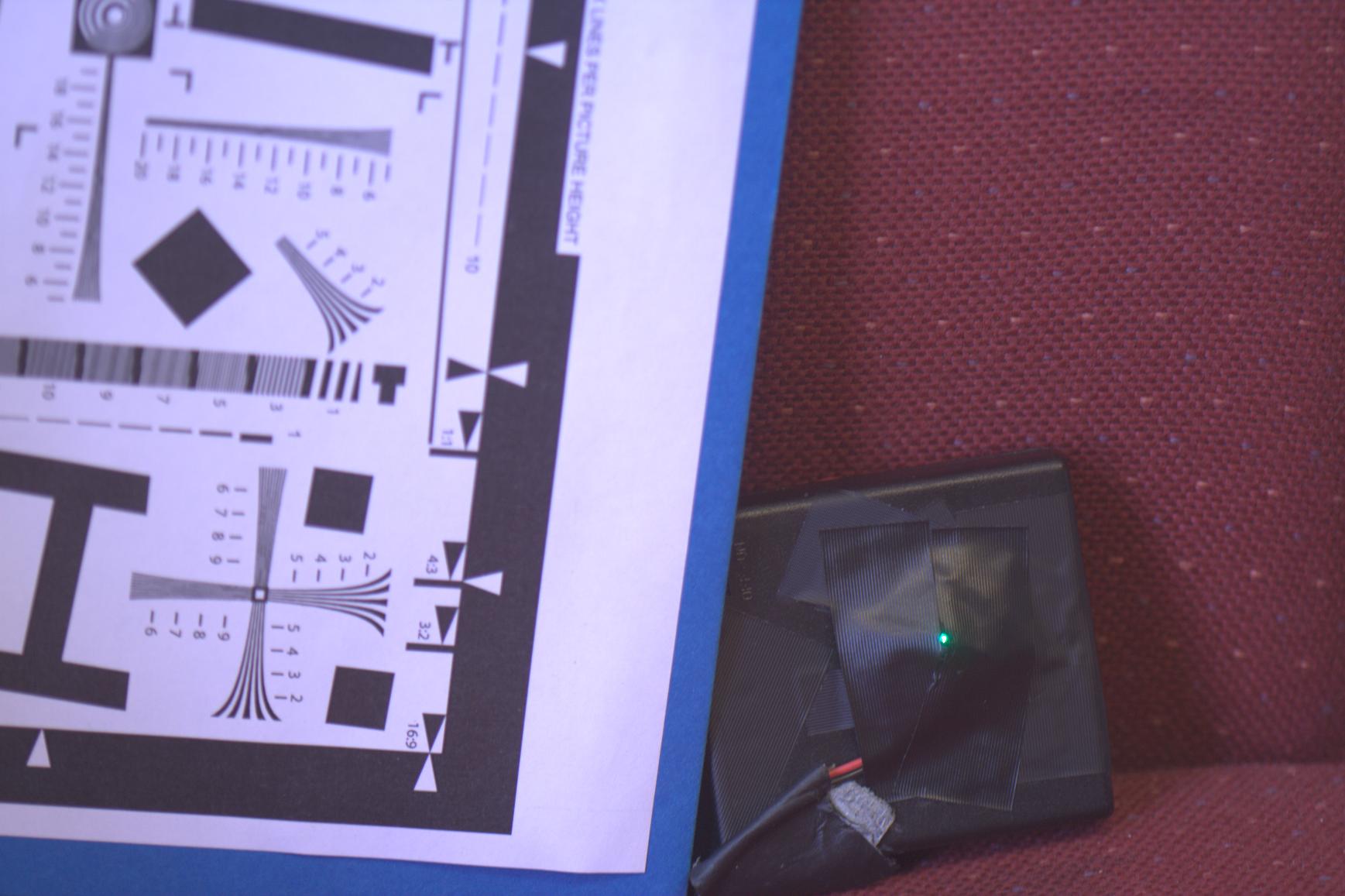 In-focus photo
|
 Out of focus photo taken with a traditional camera |
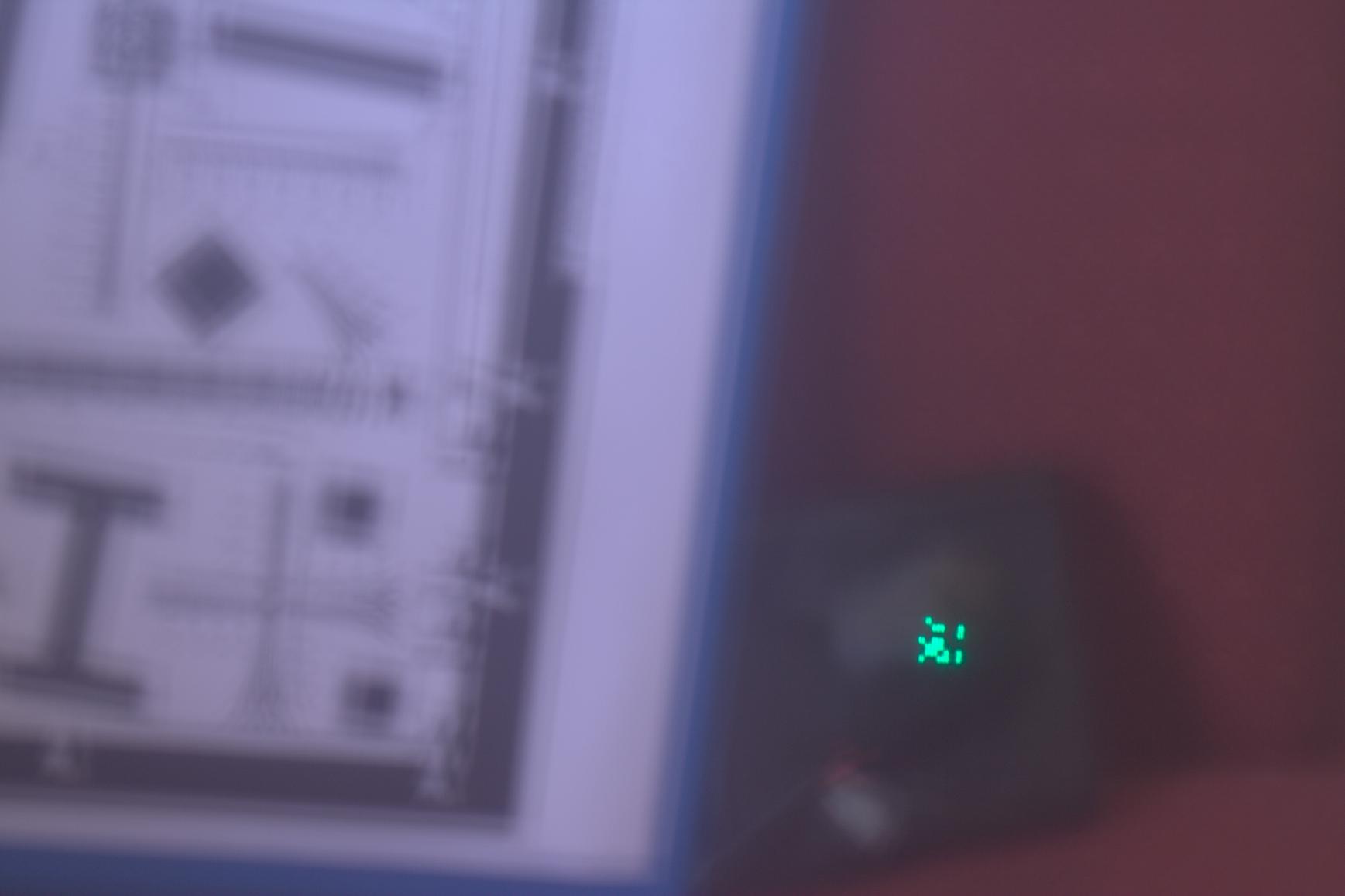 Out of focus photo taken with Encoded Blur Camera |
Graphical Illustration of Computing 4D Light Field from 2D Photo
Consider a scene consisting of several cones at different depths. If we take an image with a traditional camera, we get the photo shown above. The magnitude
of the 2D FFT of the image shows high energy at low frequencies. This is a well known fact that most energy in natural images is concentrated
in low frequencies.
Now consider taking a 2D photo of the same scene with our Heterodyne Light Field Camera. In this new camera, we place a cosine mask near the
sensor. We get an image shown as below.
Although this image looks similar to the previous photo captured using a traditional camera, notice the effect of mask on the input photo. The mask
casts a soft shadow on the sensor. It dapples the light reaching the sensor. In theory, mask modulates the incoming 4D light field to make spectral
replicas.
Now consider the 2D FFT of this new image. Notice that the spectral replicas are clearly seen!!!. Compare this FFT image with the previous FFT image to
visualize the differences. These replicas are due to the cosine mask placed near the sensor. The cosine mask modulates the incoming 4D light field.
In this example, the mask has 4 harmonics, or 4*2+1 = 9 impulses in its frequency response. Thus, we get 9*9=81 replicas in both x and y direction.
Now lets see how we can obtain the 4D light field from the modulated 2D photo captured from our Heterodyne Light Field Camera. The entire algorithm
is shown graphically below.
Steps:
1. Compute the 2D FFT of the captured 2D photo.
2. We know that we will get 9*9 replicas due to the physical mask placed near the sensor. Rearrange these 81 tiles into 4D.
3. Compute the inverse 4D FFT to get the light field.
Click on the above image to see a video (ViewCones1.avi) of different 'views' obtained from the light field. These views are essentially images that we
would obtain if we look through a narrow aperture on the lens at different positions.
|
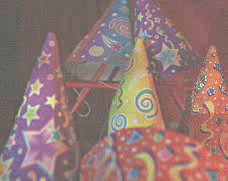 Gif Animation showing Views |
